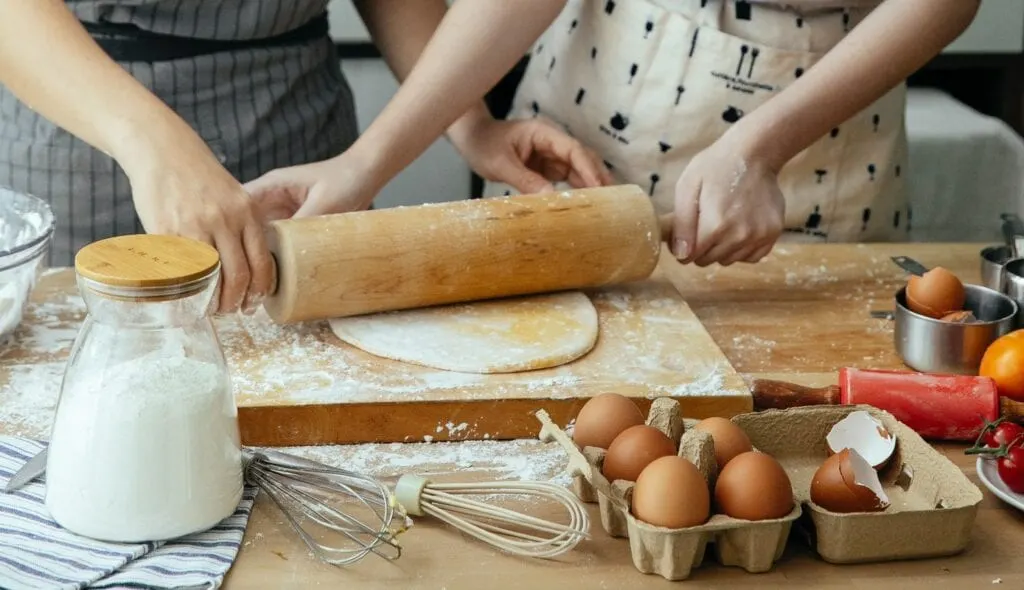Baking yeast is a living microbe most often used in cooking to raise pastries.
The most familiar yeast pastries are various pieces of bread, rolls, and buns.
The pizza base is also traditionally raised with yeast. In addition to baking, you can use yeast to manufacture beverages such as home-made beef and sima.
The production of yeast bakery products is attractive because the dough doubles in baking.
This effect was observed many centuries ago, and since then, yeast has proven to be beneficial to the body more than once.

However, before buying it, check the amount of yeast in a packet to get the best value for your money.
Dry Yeast or Fresh Yeast
The shops offer fresh and dried yeast.
Both varieties are suitable for cooking, but they differ in storage, dosage, and baking properties.
Therefore, it is worth paying attention to the choice of yeast.
Fresh Yeast
Fresh yeast is stored in the refrigerator for about a month from the date of packing.
You can extend the shelf life of fresh yeast by freezing. In the freezer, fresh yeast stays tightly packed for several months.
While baking, the new yeast is crushed and soaked in a hand-warm (approx. +37 C) liquid, as at lower temperatures, the yeast acts more slowly and requires a longer rise time.
At too high a temperature (above +50 C), the yeast cells are destroyed and stop working.
Dry yeast
Dry yeast is otherwise similar to fresh yeast, but water has been squeezed and evaporated from it.
As a result, dry yeast lasts much longer and can be stored at room temperature.
Because dry yeast is in a denser form than fresh yeast, a smaller amount is needed to raise the pastry.
In baking, dry yeast needs a liquid warmer than hand heat (approx. +42 C) to function.
The dry yeast is mixed with a small amount of flour before it is added to the liquid.
Quantities and Temperatures
See below to learn the amount of yeast in a packet in different states.
- One packet of fresh yeast = 50 g
- One bag of dry yeast = 11 g
- One bag (11g) of dry yeast = approx. 30g of fresh yeast
Bun or bread dough
5dl liquid = 25-50g fresh yeast or one ps dry yeast.

Bun dough
5dl liquid = 50g fresh yeast or two ps dry yeast.
Liquid temperature
- Fresh yeast approximately +37 degree Celsius
- Dry yeast approximately +42 degree Celsius
How Much Yeast You Should Use In Baking?
Yeast requires sufficient temperature, fluid, and carbohydrates to function.
A small amount of sugar, syrup, or honey speeds up the action of yeast in baking.
If a large amount of fat, sugar, or eggs are used in the dough, more yeast is needed than usual.
Exploit Yeast’s Ability to Form Gas
The yeast’s ability to form gases is exploited in raising the dough.
Yeast can break down the sugars in the dough for its use and comprises carbon dioxide, alcohol, and flavorings.
The dough rises when the yeast’s gas is trapped in the dough, causing the dough pores to expand and the dough to rise.
Yeast does not make structure into dough: it is a matter of flour and adequate kneading.
What Does The Amount Of Gases Depend Upon?
The number of gases and the rate of formation depends on yeast, the rising temperature, and the fresh yeast’s quality.
Yeast cells lose their ability to function 5 to 10 minutes after the start of baking.

Yeast can raise the dough only with the help of the natural sugar in the flour.
A small amount of sugar speeds up the action of the yeast if a lot of sugar and fat is added to the dough.
Final Words
Due to its additive-free nature, fresh yeast is the only real yeast in organic baking.
Domestic Fresh Yeast also meets the Organic Regulation GMO ban requirement, as the yeast has not been genetically modified.